File Info
| Exam | Oracle Business Intelligence Foundation Suite 11g Essentials |
| Number | 1z0-591 |
| File Name | Oracle.1z0-591.PracticeTest.2019-02-13.71q.tqb |
| Size | 3 MB |
| Posted | Feb 13, 2019 |
| Download | Oracle.1z0-591.PracticeTest.2019-02-13.71q.tqb |
How to open VCEX & EXAM Files?
Files with VCEX & EXAM extensions can be opened by ProfExam Simulator.
Coupon: MASTEREXAM
With discount: 20%





Demo Questions
Question 1
What is an example of a Session Variable?
- ETL Load Date
- User Organization
- OLAP DSN
- Top Customers by Revenue
Correct answer: B
Explanation:
Note 1: There are four types of variables that you can use:Session Repository Presentation Request Note 2: Session VariablesA session variable is a variable that is initialized at login time for each user. When a user begins a session, the Oracle BI Server creates a new instance of a session variable and initializes it. There are as many instances of a session variable as there are active sessions on the Oracle BI Server. Each instance of a session variable could be initialized to a different value. There are two types of session variables:System — A session variable that the Oracle BI Server and Oracle BI Presentation Services use for specific purposes. System session variables have reserved names that cannot be used for other kinds of variables (such as static or dynamic repository variables and non-system session variables). Non-system — A system variable that the administrator creates and names. For example, the administrator might create a SalesRegion non-system variable that initializes the name of a user's sales region. The administrator creates non-system session variables using the Oracle BI Administration Tool. Incorrect answers:A: ETL Load Date is a DAC Source System Parameter.C: OLAP DSN is a Repository variable. Note 1: There are four types of variables that you can use:
Session
Repository
Presentation
Request
Note 2: Session Variables
A session variable is a variable that is initialized at login time for each user. When a user begins a session, the Oracle BI Server creates a new instance of a session variable and initializes it.
There are as many instances of a session variable as there are active sessions on the Oracle BI Server. Each instance of a session variable could be initialized to a different value.
There are two types of session variables:
System — A session variable that the Oracle BI Server and Oracle BI Presentation Services use for specific purposes.
System session variables have reserved names that cannot be used for other kinds of variables (such as static or dynamic repository variables and non-system session variables).
Non-system — A system variable that the administrator creates and names. For example, the administrator might create a SalesRegion non-system variable that initializes the name of a user's sales region.
The administrator creates non-system session variables using the Oracle BI Administration Tool.
Incorrect answers:
A: ETL Load Date is a DAC Source System Parameter.
C: OLAP DSN is a Repository variable.
Question 2
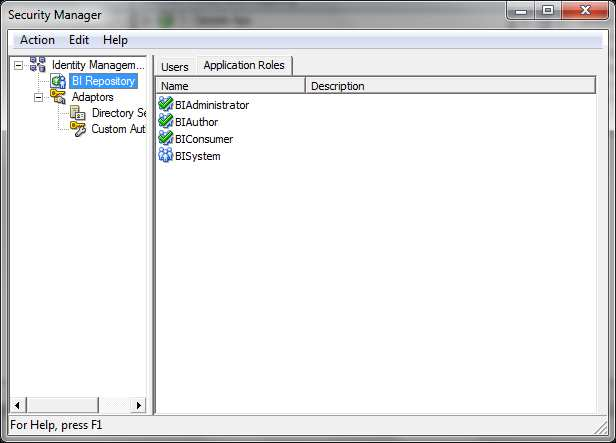
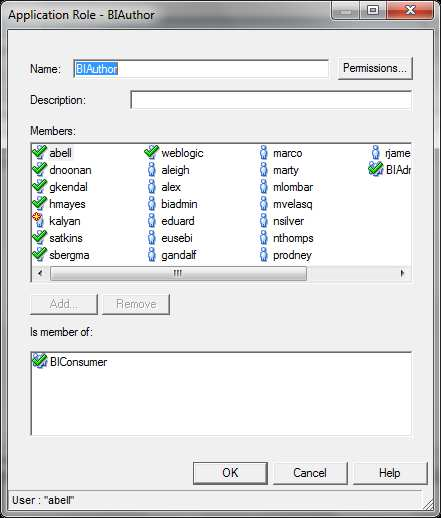
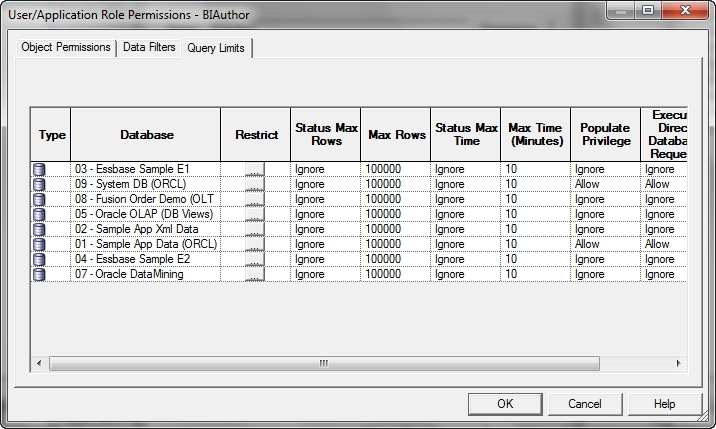
Query limits tab can be accessed through________.
- Security Manager, Query tab, Application role dialog box, Permissions
- Security Manager, Application Roles tab, Query dialog box, Permissions
- Security Manager, Application Roles tab, Application role dialog box, Permissions
- Security Manager, Application Roles tab, Application role dialog box, Query Properties
Correct answer: C
Explanation:
Query environment can be managed by setting query limits (governors) in the Repository (RPD) for particular Application Roles. You should always set query limits for particular application roles rather than for individual users. Steps:1. Login to Repository using OBIEE Admin Tool 2. Navigate to Manage > Identity 3. Go to Application Role tab, choose the role and double click on it to open. 4. Click on Permissions tab 5. Set the Query Limits. You can limit queries by the number of rows received, by maximum run time, and by restricting to particular time periods. You can also allow or disallow direct database requests or the Populate privilege. Query environment can be managed by setting query limits (governors) in the Repository (RPD) for particular Application Roles. You should always set query limits
for particular application roles rather than for individual users.
Steps:
1. Login to Repository using OBIEE Admin Tool
2. Navigate to Manage > Identity
3. Go to Application Role tab, choose the role and double click on it to open.

4. Click on Permissions tab

5. Set the Query Limits. You can limit queries by the number of rows received, by maximum run time, and by restricting to particular time periods. You can also allow or disallow direct database requests or the Populate privilege.

Question 3
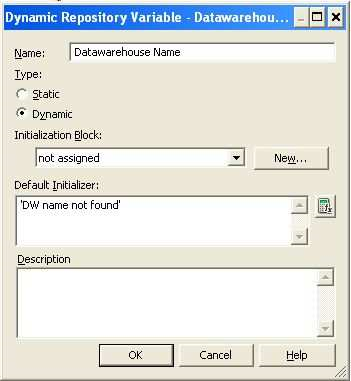
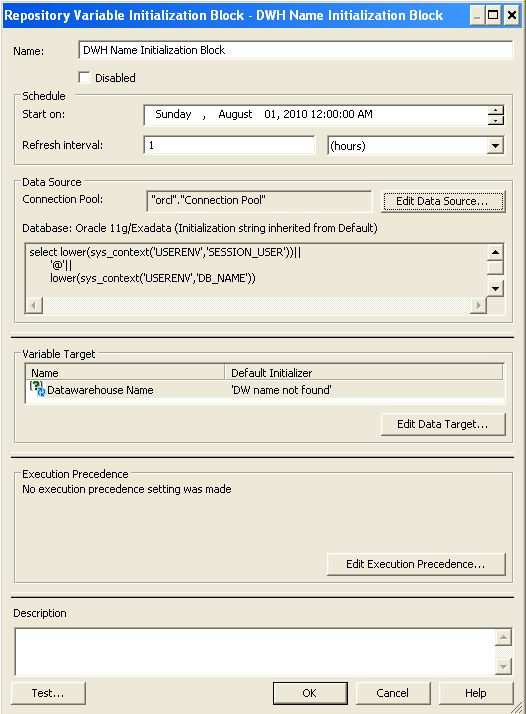
One of the most common uses of Dynamic Repository Variables is to setup filters for use in reporting. Which variable below is a valid example of a Dynamic Repository Variable?
- Year
- Month
- Quarter
- CurrentMonth
Correct answer: D
Explanation:
CurrentMonth can be calculated by a sql statement. Note:REPOSITORY VARIABLE(DYNAMIC) Initialized when BI server is started Assigned value dynamically based on the result of a query Value is dependent of the sql provided in Initialization Block Create a dynamic variable and provide a Name and Default Initializer.Create a new initialization block by clicking on the New button in the above screen. Provide Intialization Block variable Name Click on “Edit Data Source” button and provide the sql to be used for the variable, e.g. select lower(sys_context('USERENV','SESSION_USER'))|| '@'|| lower(sys_context('USERENV','DB_NAME')) from dual; CurrentMonth can be calculated by a sql statement.
Note:
REPOSITORY VARIABLE(DYNAMIC)
- Initialized when BI server is started
- Assigned value dynamically based on the result of a query
- Value is dependent of the sql provided in Initialization Block
Create a dynamic variable and provide a Name and Default Initializer.Create a new initialization block by clicking on the New button in the above screen.

Provide Intialization Block variable Name

Click on “Edit Data Source” button and provide the sql to be used for the variable, e.g.
select lower(sys_context('USERENV','SESSION_USER'))||
'@'||
lower(sys_context('USERENV','DB_NAME'))
from dual;

